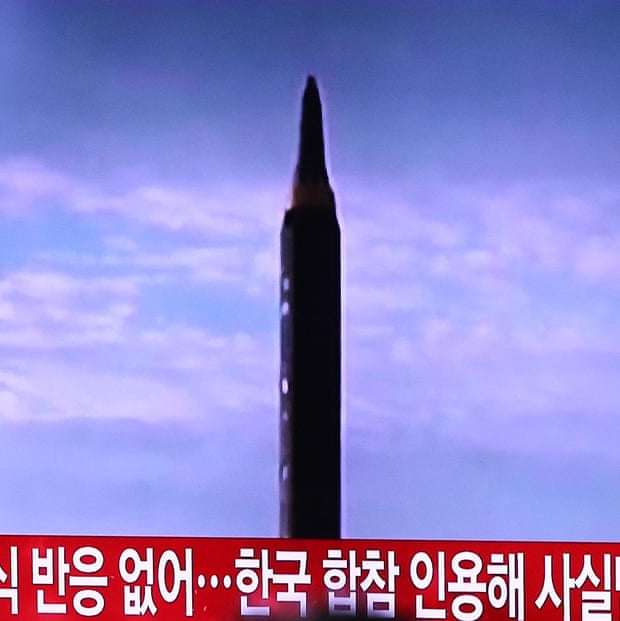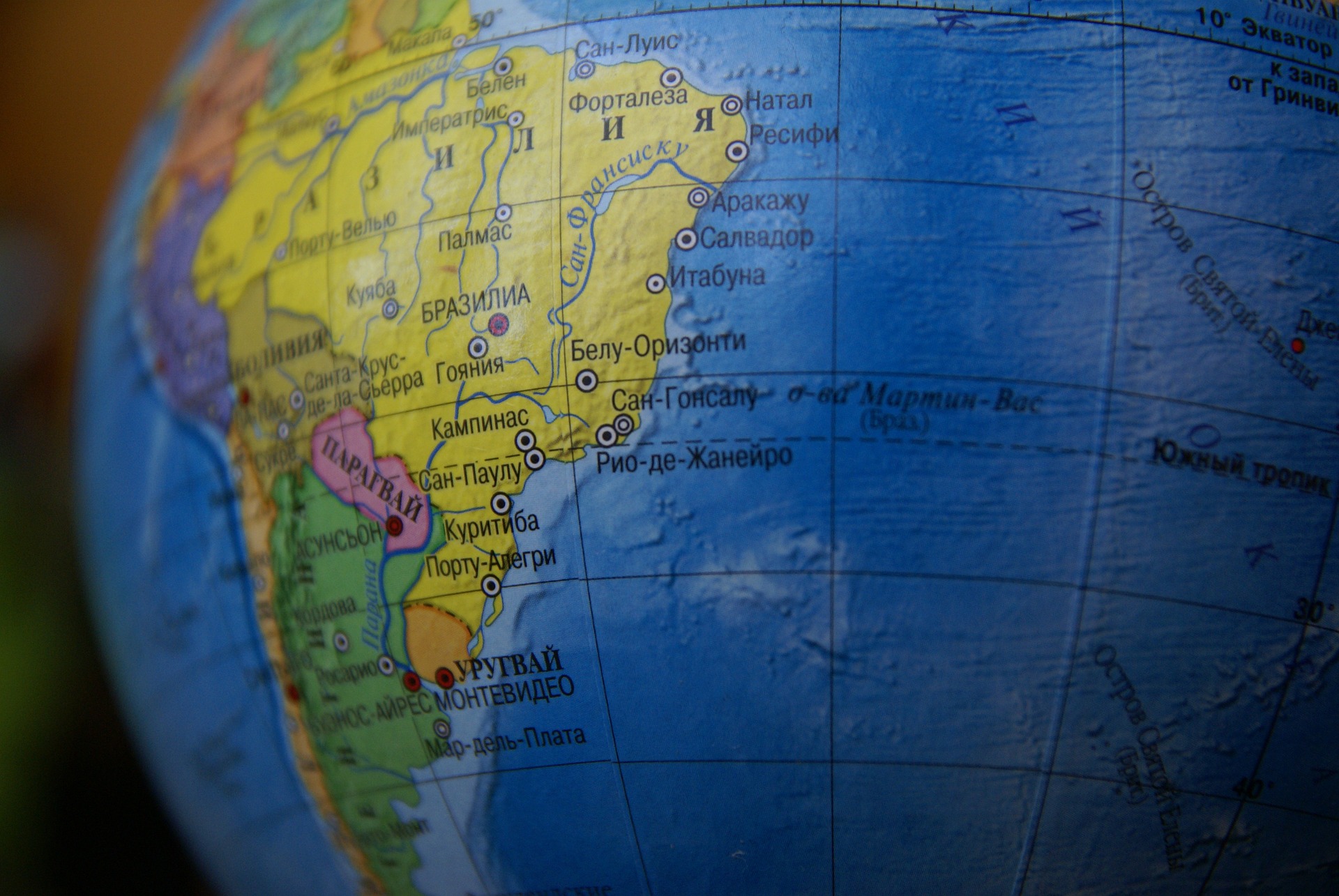North Korea has confirmed that it tested a new, powerful type of intercontinental ballistic missile, marking an end to a self-imposed moratorium on long-range testing in place since 2017 and drawing international condemnation.
State media said on Friday that leader Kim Jong-un had directly guided the test of the Hwasong-17 – a “new type” of intercontinental ballistic missile that is North Korea’s biggest to date. He said it was key to deterring nuclear war.
The missile reportedly flew for 1,090km (681 miles) to a maximum altitude of 6,248.5km (3,905 miles) and hit a target in the sea.

Kim was reported to have said that North Korea was preparing for long confrontation with US imperialism and that its strategic force was ready to check and contain any military attempt by the US.
Flight data from the South Korean and Japanese militaries had indicated the missile flew higher and for a longer time than any of North Korea’s previous tests before crashing into the sea west of Japan.
It was the first full-capability launch of the nuclear-armed state’s largest missiles since 2017 and represents a significant step in Pyongyang’s development of weapons that might be able to deliver nuclear warheads anywhere in the US.
North Korea’s return to weapons tests poses a headache for US president Joe Biden as he responds to Russia’s invasion of Ukraine, and presents a challenge to South Korea’s incoming conservative administration.
Biden and Japanese prime minister Fumio Kishida, meeting at a Group of Seven summit in Brussels in a show of unity against the Kremlin’s war, condemned the North Korean launch, stressed the need for diplomacy and agreed to work together to hold Pyongyang “accountable”, a White House official said.
“This launch is a brazen violation of multiple UN security council resolutions and needlessly raises tensions and risks destabilising the security situation in the region,” White House press secretary, Jen Psaki, said earlier.
Q&A
What do we know about the Hwasong-17 ICBM system?
Show

• North Korea unveiled the previously unseen ICBM at a predawn military parade in October 2020. Analysts noted it appeared “considerably larger” than North Korea’s last new ICBM, the Hwasong-15, which was test-fired in November 2017.
• It was displayed a second time at a defence exhibition in Pyongyang in October 2021. After examining photos of the exhibit, analysts concluded the official designation of this large ICBM was most likely Hwasong-17, not Hwasong-16.
• The Hwasong-17, which has been shown on a transporter vehicle with 11 axles, would be one of the largest road-mobile ICBMs in the world if it becomes operational.
• Its diameter is estimated to be between 2.4 and 2.5 metres, and its total mass, when fully fuelled, is likely to be somewhere between 80,000 and 110,000kg, according to 38 North, a US-based programme that monitors North Korea.
• The Hwasong-17’s size has prompted analysts to speculate that it will be designed to carry multiple warheads and decoys to better penetrate missile defences.
• Some observers say that the satellite technology that North Korea claimed to have tested in two launches in late February and early March could also be used for a multiple independently targetable re-entry vehicle system, potentially allowing a single missile to drop nuclear warheads on different targets. Reuters
The US state department later announced sanctions on entities and people in Russia and North Korea, with the targeted persons and organisations accused of “transferring sensitive items to North Korea’s missile program”.
“These measures are part of our ongoing efforts to impede the DPRK’s ability to advance its missile program and they highlight the negative role Russia plays on the world stage as a proliferator to programs of concern,” the department said.
South Korea’s outgoing president, Moon Jae-in, who has made engaging with North Korea a major goal of his administration, said the launch posed a serious threat to the Korean peninsula, the region and the international community and was a “clear violation” of UN security council resolutions.
Japan’s prime minister, Fumio Kishida, described the launch as “outrageous”, while Japanese defence minister Makoto Oniki said: “At a time when the world is dealing with Russia’s invasion of Ukraine, North Korea is pressing ahead with launches that unilaterally aggravate provocations against the international community, which is absolutely unforgivable.”
North Korea had put its ICBM and nuclear tests on hold since 2017, but has defended the weapons as necessary for self-defence. Biden has been unable to jumpstart stalled denuclearisation effortsand Pyongyang has called US overtures insincere while its maintains “hostile policies” such as sanctions and military drills.
North Korea’s launch missile was a jarring reminder that Kim will not be ignored even as the world’s attention is gripped by the Ukraine crisis.
The launch prompted South Korea to test-fire a volley of its own, smaller ballistic and air-to-ground missiles to demonstrate it has the “capability and readiness” to precisely strike missile launch sites, command and support facilities, and other targets in North Korea if necessary, South Korea’s military said.
US secretary of state, Antony Blinken, and Chung Eui-yong, the South Korean foreign minister, called for a decisive response and said additional measures by the UN security council were essential, South Korea’s foreign ministry said.
The US the UK, France, Ireland, Albania and Norway asked the UN security council to hold a public meeting on Friday to discuss the launch and UN secretary-general António Guterres urged Pyongyang “to desist from taking any further counter-productive actions”.
Analysts say the unprecedented frequency of missile tests this year is a clear signal that Kim is determined to cement North Korea’s status as a nuclear power, enabling him to approach any future nuclear talks with the US from a position of strength.
“Despite economic challenges and technical setbacks, the Kim regime is determined to advance its missile capabilities,” said Leif-Eric Easley, a professor of international studies at Ewha Womans University in Seoul. “It would be a mistake for international policymakers to think the North Korean missile threat can be put on the back burner while the world deals with the pandemic and Russia’s invasion of Ukraine.”
The launch will present South Korea’s incoming president, Yoon Suk-yeol, with a considerable policy challenge when he takes office in early May.
North Korea has conducted 13 rounds of weapons launches this year, including one on 16 March in which a suspected missile exploded above Pyongyang shortly after launch.
The volley of tests fuelled speculation that Kim was gearing up for the launch of a larger weapon theoretically capable of reaching the US mainland.

